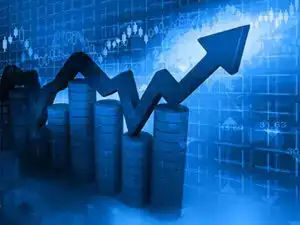Harvesting the Future: How Technology Shapes Agriculture
It’s remarkable to reflect on the transformation agriculture has undergone, especially in the past few decades. I vividly remember my childhood trips to my grandparents’ farm, a place where the only technology we had was an aging tractor and a collection of hand tools. Fast forward to today, and the landscape has changed drastically. On my last visit, I was astounded to see drones gracefully hovering over the fields, meticulously mapping crop health with astonishing precision. Technology has evolved beyond mere enhancement; it has sparked a revolution in how we approach food production.
Modern farming methods now incorporate cutting-edge tools such as artificial intelligence and big data analytics. Farmers can now analyze the health of their soil, monitor complex weather patterns, and even predict crop yields with remarkable accuracy. Embracing these innovations has empowered many farms to boost productivity while simultaneously reducing costs and alleviating environmental impact. We’re committed to delivering a rich learning experience. That’s why we’ve selected this external website with valuable information to complement your reading about the topic, malaysia best online casino.
The Role of Precision Agriculture
One of the most intriguing discoveries I made is the concept of precision agriculture. Picture this: applying water, fertilizers, or pesticides exactly where and when they’re needed, rather than indiscriminately across an entire field. This approach not only maximizes resource efficiency but also significantly cuts down on waste. During a recent workshop, I witnessed firsthand how farmers are utilizing GPS technology and sensors to gauge crop health in real-time. It felt like stepping into a living video game!
Farmers who have embraced these practices often notice substantial improvements in both their harvests and their financial results. With mounting challenges such as climate change and population growth, these innovations are becoming indispensable. They not only promote food security but also demonstrate respect for our planet.
Vertical Farming: A Game Changer
Another thrilling advancement in agricultural technology is vertical farming, which genuinely flips traditional food production on its head—literally. When I visited an urban vertical farm recently, Recommended Internet page I was captivated by the scale and efficiency of what I saw. Stacked layers of vibrant greens flourished under artificial lights, thriving through hydroponics or aeroponics instead of soil. This method dramatically minimizes the space required for farming while using up to 90% less water compared to conventional practices.
I realized that vertical farming isn’t just a clever solution for urban settings with spatial constraints; it also provides a sustainable way to produce fresh food close to consumers. By shortening the supply chain from farm to table, we not only benefit the environment but also ensure that people enjoy fresher produce. It’s a genuine win-win for everyone involved!
Connecting Farmers with Consumers
In today’s technological landscape, Recommended Internet page the bond between farmers and consumers is stronger than ever. With the advent of online platforms, individuals can conveniently access locally grown produce right from their smartphones. Last year, I took the leap and started ordering groceries through a local co-op that connects farmers directly with consumers. It’s compelling to see how technology serves to bridge that gap.
As a consumer, I take pride in knowing the source of my food and supporting local farmers. It nurtures a sense of community and cultivates trust that benefits everyone involved—farmers can swiftly sell their goods, and consumers relish fresher, more nutritious options. This shift is vital for building a resilient food system, especially in the face of global challenges.
Future Visions: Sustainability and Food Security
As I look ahead, I often contemplate the potential influence of technology on our global food systems. With advancements in biotechnology and sustainable farming practices, there’s tangible hope for achieving genuine food security for all. The objective isn’t merely to produce more food; it’s to make it accessible to everyone while safeguarding our planet’s health.
Personally, I hold a sense of optimism about the future of agriculture. As technology evolves, I eagerly anticipate how it will empower us to tackle upcoming challenges, from climate change to population growth. It’s likely that new innovations will continue to emerge, reshaping our food systems in ways we can only begin to imagine, all while sharing a fundamental mission: to nourish our communities sustainably. To further enhance your knowledge on the subject, we recommend visiting this external resource. You’ll find supplementary information and new perspectives that will enrich your understanding. casino in malaysia, give it a look!

